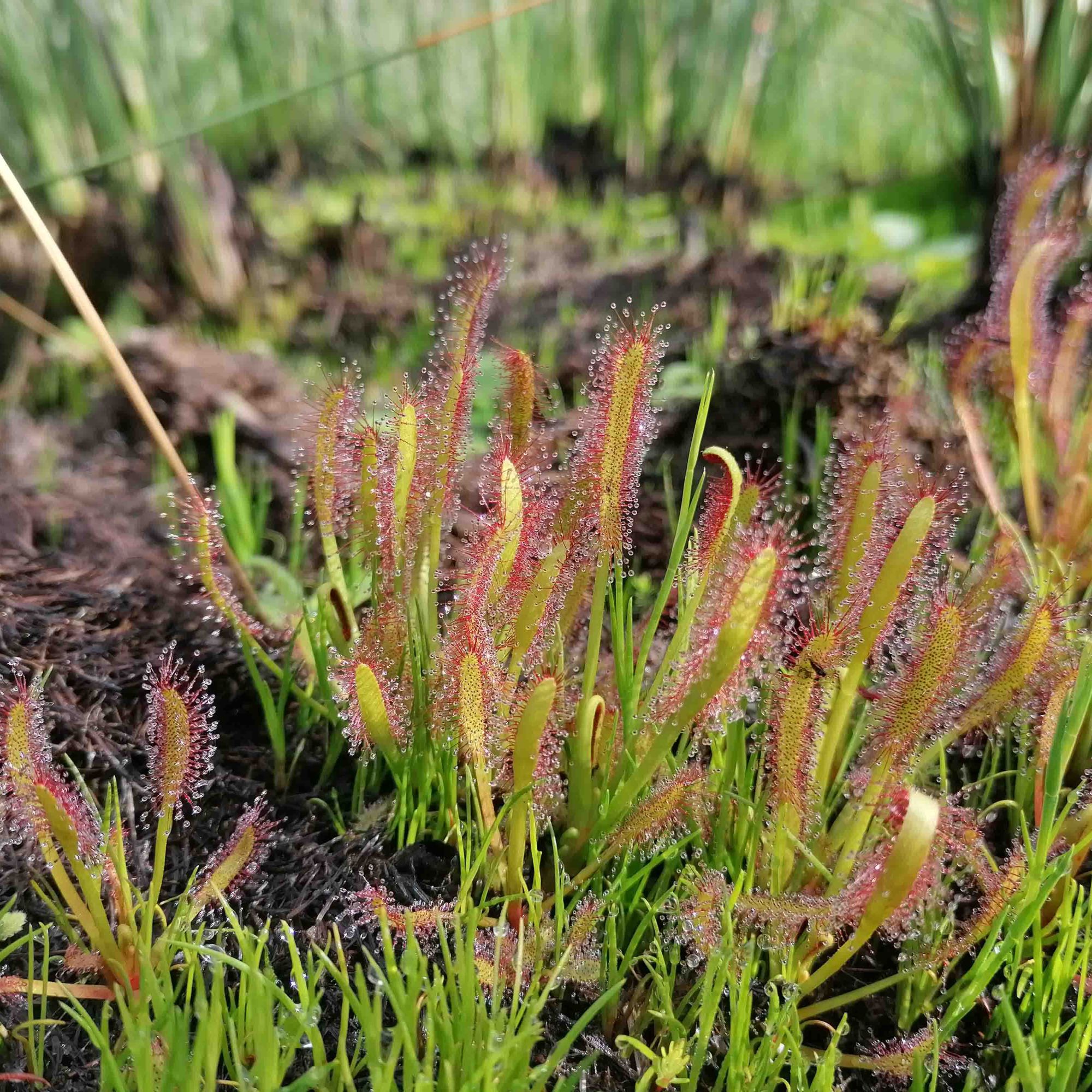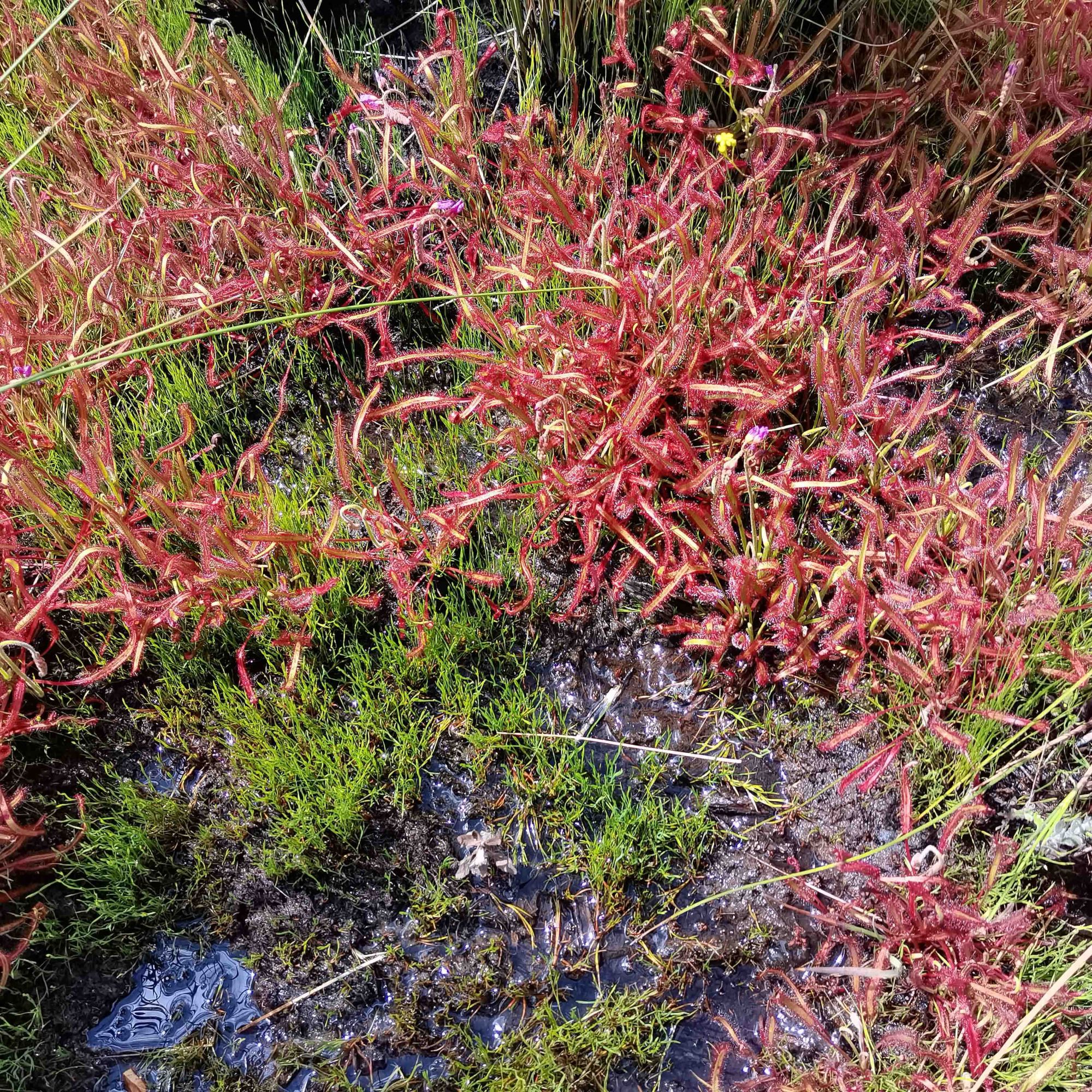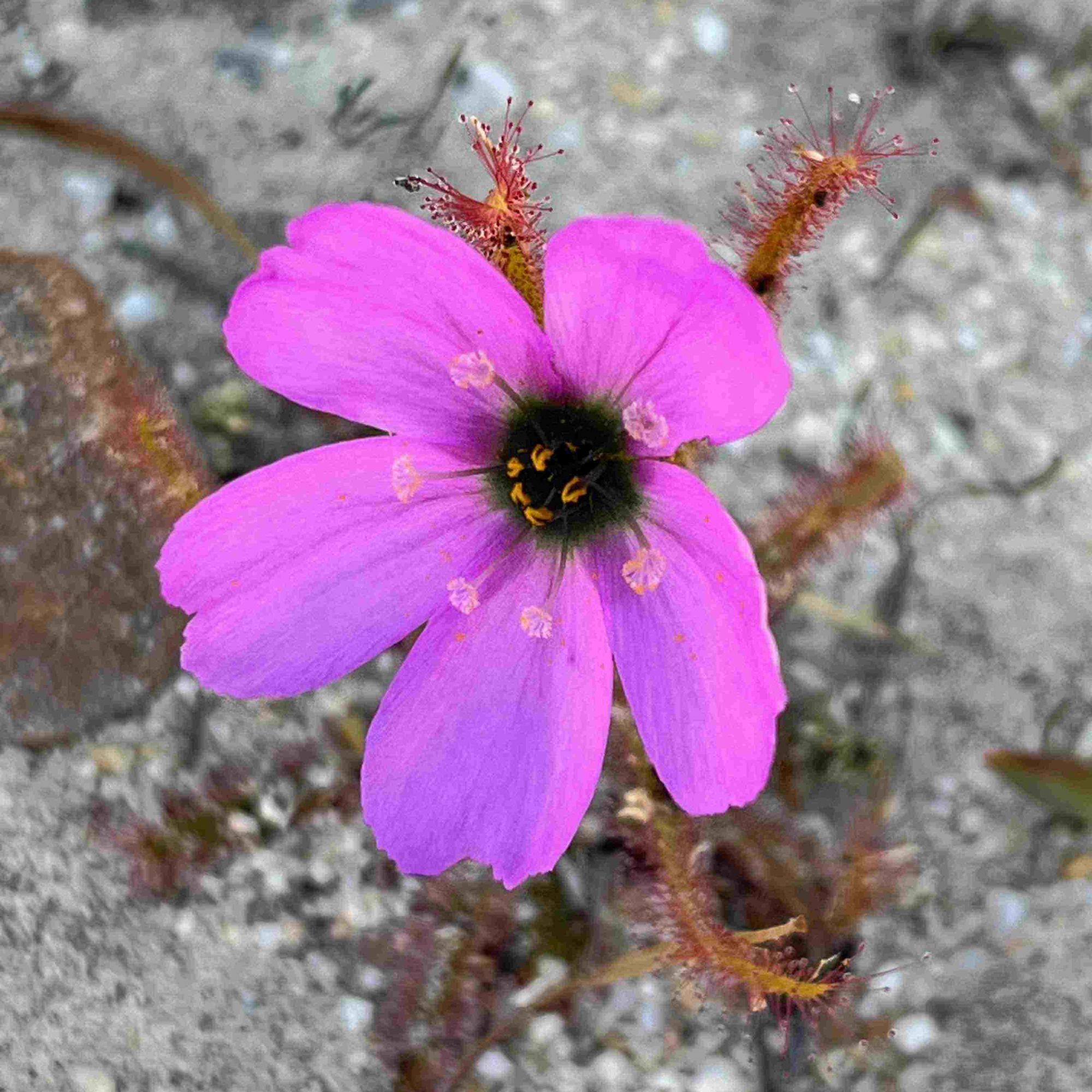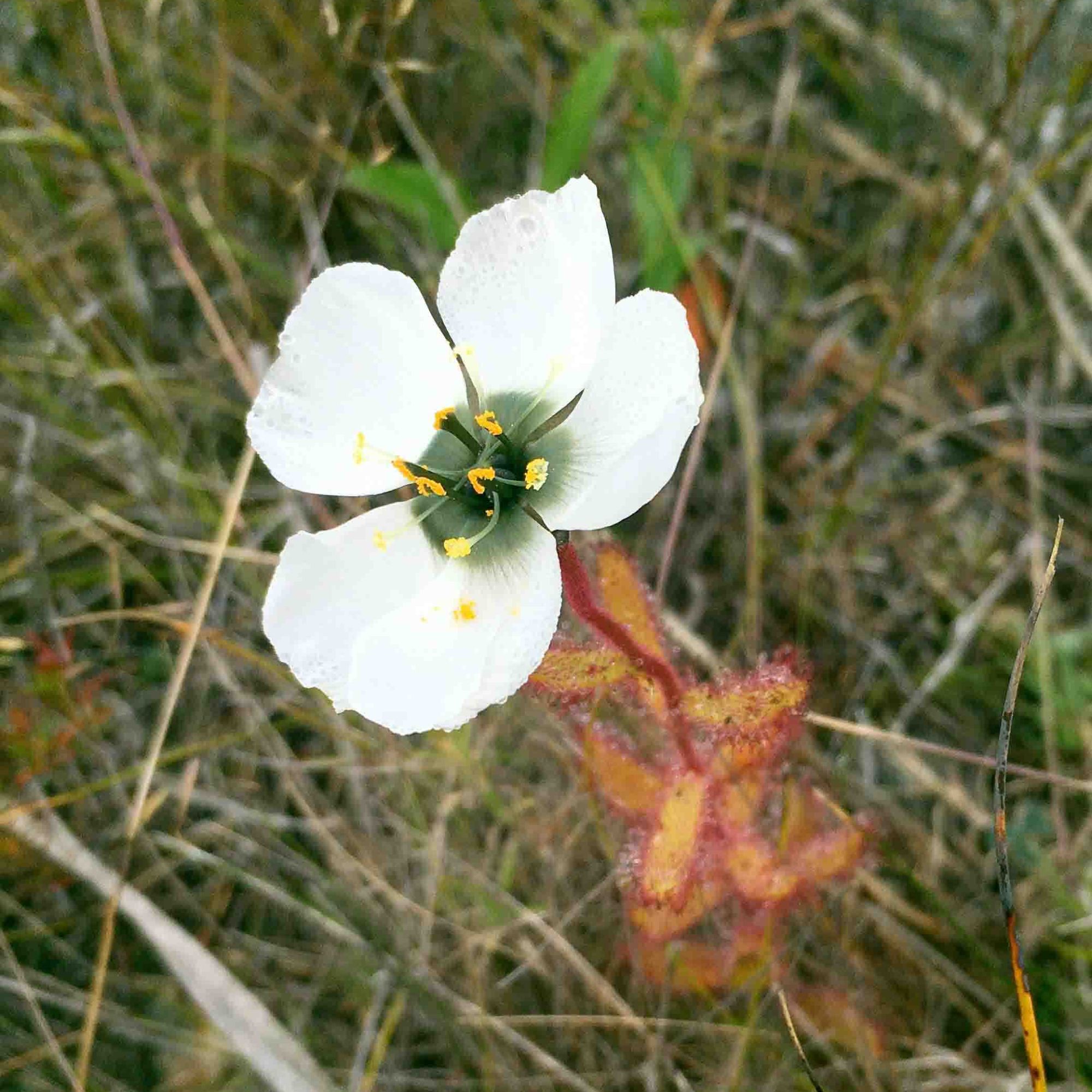
Small Carnivores in Plant Form: the South African Genus Drosera
The Overberg mountain ranges (Kogelberg and Hottentots Holland, both of which include CapeNature-managed Protected Areas), are the centre of diversity for Drosera in the Western Cape, with at least 14 species . The family Droseraceae, commonly referred to as the sundew family, is found on all continents, except Antarctica. These interesting plants are murderers in disguise! The family is comprised of three carnivorous genera, namely Aldrovanda, Dionaea, and Drosera. The genera Aldrovanda and Dionaea are monotypic, which means there is only one species in each genus. Aldrovandra vesiculosa and Dionaea muscipula (the Venus fly-trap) are mostly cultivated as curiosities (Simpson, 2010). These two species use snap-traps as their trapping mechanism (Rjosk et al., 2022). This movement is referred to as thigmonasty - a form of nastic (non-directional) movement as a response to touch or vibration (Braam, 2005).
The genus Drosera consists of 250 species worldwide with over 30 on the African continent (Rjosk et al., 2022). Commonly known as sundews, there are 20 species of Drosera present in South Africa, of which 19 are listed as of Least Concern and one is listed as Rare in the Red Data list of South Africa (SANBI, 2020). Drosera regia, a highly localised habitat specialist, is well protected and not threatened, but listed as Rare due to a very limited distribution in the mountains of the Western Cape. Nine species are only found in the Western Cape, while four are located in more than one province. Six species are not endemic to South Africa which means that they also occur slightly outside the country’s borders.
All Drosera have glands (tentacles) on the leaves (Figure 1). These glands are stalked and sticky to the touch, and practically function as insect traps. The glands secrete an adhesive fluid that attracts small insects. Once an insect is trapped, it becomes immobilised. The tentacles around the trapped insect bend towards the prey to increase contact to the leaf. The glands are involved in the digestion of the insect by secreting specific enzymes which break down the insect into elements that can be absorbed by the plant e.g., nitrogen, sodium, calcium, phosphorus, iron, and magnesium (Procko et al., 2022; Rjosk et al., 2022). The remaining exoskeleton of the insect is then released from the Drosera leaf.
Some Drosera species carry their flowers on long stalks (referred to as scapes – which is a leafless flower stem), while the flowers of other species are located on short stalks closer to the leaves. One would have thought that the development of longer stalks was to prevent pollinators from being trapped by the tentacles of the sticky leaves. However, a study by Anderson (2010) confirmed that this is not the case. The longer stalks simply result in the flowers being at a height where it is more visible to the respective pollinators. Flower colours differ vastly, e.g. Drosera cistiflora exhibits six flower colours, namely pink, purple, white, red, yellow, and salmon pink (Von Witt et al., 2020).
Drosera species usually occur in habitats that are moist, but not too wet (Figure 2). The fact that they thrive in nutrient-poor soils is the reason why these plants trap insects as food.
If you are interested in observing these murderous individuals, you should keep your eyes fixed close to the ground in relatively wet areas, of which there are numerous examples in CapeNature Protected Areas. When you encounter a beautiful, elegant, white or pink flower of approximately 25 mm in diameter (Figures 3 and 4), have a close look at the leaves and you could be privileged to spot a carnivorous member of the enigmatic Droseraceae family.
REFERENCES:
Anderson, B., 2010. Did Drosera evolve long scapes to stop their pollinators from being eaten? Annals of Botany, 106(4), pp.653-657.
Braam, J., 2005. In touch: plant responses to mechanical stimuli. New Phytologist, 165(2), pp.373-389.
Fleischmann A., 2018. Drosera xerophila (Droseraceae), a new species from Overberg District, South Africa, and an overview of the rosetted hemicryptophyte sundew species from Western Cape Province. Willdenowia 48, pp.93-107. doi: 10.3372/wi.48.48106
Procko, C., Radin, I., Hou, C., Richardson, R.A., Haswell, E.S. and Chory, J., 2022. Dynamic calcium signals mediate the feeding response of the carnivorous sundew plant. Proceedings of the National Academy of Sciences, 119(30), p.e2206433119.
Rjosk, A., Neinhuis, C., Monizi, M. and Lautenschläger, T., 2022. Synopsis of the genus Drosera (Droseraceae) in Angola and the Democratic Republic of the Congo. Blumea 67(1), pp.1–14. doi: 10.3767/blumea.2022.67.01.03
SANBI. 2020. Statistics: Red List of South African Plants version 2020.1. Downloaded from Redlist.sanbi.org on 2022/11/25.
Simpson, M.G., 2010. Diversity and Classification of Flowering Plants: Eudicots. In: Plant Systematics (Second Edition), Chapter 8, pp.275-448. doi: 10.1016/B978-0-12-374380-0.50008-7
Von Witt, C.G., Anderson, B., Durbach, I.N. and Johnson, S.D., 2020. Breeding systems of floral colour forms in the Drosera cistiflora species complex. Plant Biology, 22(6), pp.992-1001.
INTERESTING READS:
https://hungryplant.com/strange-facts-about-sundews/
https://www.treehugger.com/sticky-facts-about-carnivorous-sundew-plants-4864497

Figure 1 Drosera capensis Photo by Martine Jordaan

Figure 2 Drosera capensis in wet habitat Photo by Takalani Makhomu

Figure 3 Drosera sp purple flower Photo by Charleen Brunke

Figure 4 Drosera sp white flower Photo by Charleen Brunke



